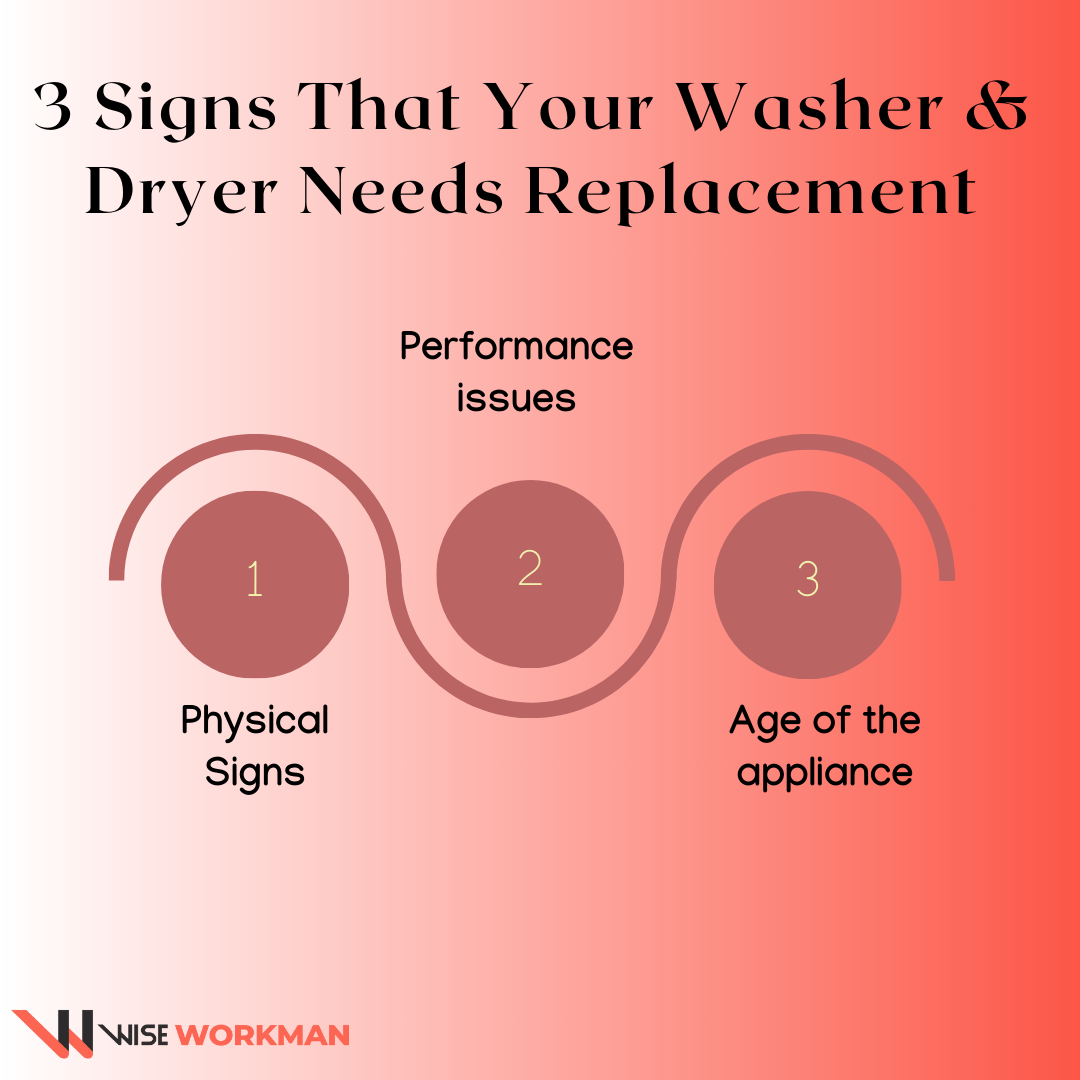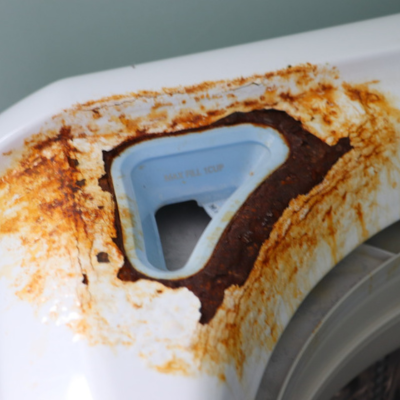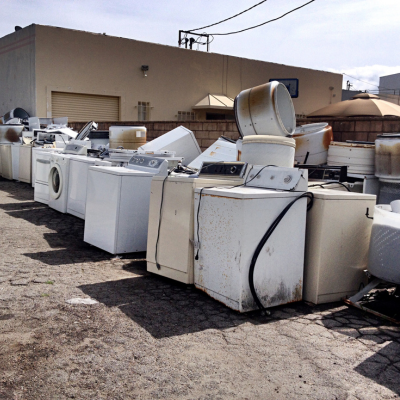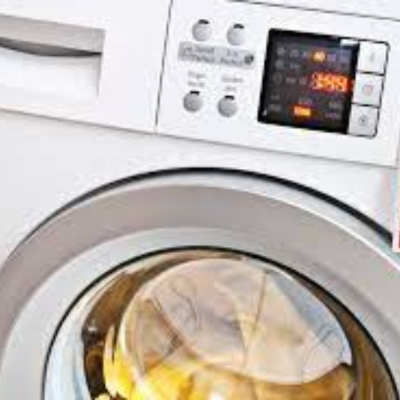In every home, washers and dryers play a pivotal role, tirelessly working behind the scenes to keep our clothes clean and fresh.
Do you know how long do washers and dryers last and what factors influence their durability? Typically, washers and dryers last about 10 to 14 years, with lifespan depending on factors such as usage frequency, maintenance, brand quality, and environment.
As an authority in the field, I've delved into the depths of this topic, exploring the average lifespan of various brands, the impact of other factors, and even the role of planned obsolescence.
This article will also shed light on the signs that your washer and dryer may need replacement and the intriguing relationship between energy efficiency and appliance lifespan.
When it comes to the average lifespan of washers and dryers, the numbers can vary. However, a consensus indicates that these essential household appliances tend to serve us for around 10 to 14 years.
This figure, of course, represents an average, with actual lifespans varying based on several factors, which we'll delve into shortly.
The durability and lifespan of washers and dryers are not set in stone. Several factors can influence how long these appliances last. For instance, the frequency of use can significantly impact their lifespan.
A washer or dryer used daily may not last as long as one used less frequently. Regular maintenance can also play a crucial role in extending the life of these appliances, while neglect can lead to a shorter lifespan.
Additionally, the quality and build of the appliance itself can greatly affect its longevity.
| Brand | Average Lifespan |
| Speed Queen | Up to 25 Years |
| LG | 10 to 15 Years |
| Kenmore | 10 to 15 Years |
| Whirlpool | 10 to 15 Years |
The average lifespan of washers and dryers can also vary significantly between different brands. Some brands, such as Speed Queen, are renowned for their durability, with some units lasting up to 25 years.
In contrast, other popular brands like LG, Kenmore, and Whirlpool typically have a lifespan of around 10 to 15 years. Therefore, when planning a purchase, it's worth considering the average lifespan of different brands to make an informed decision.

The frequency of use is a significant factor that can impact the lifespan of washers and dryers. Just like any other machine, the more often you use it, the faster it wears out.
For instance, a washer or dryer used daily is likely to have a shorter lifespan compared to one used less frequently. This is because frequent use can lead to faster wear and tear of the components, leading to a need for repairs or replacement sooner.

Regular maintenance plays a crucial role in extending the lifespan of washers and dryers. This includes tasks like cleaning the lint filter in the dryer after every use, not overloading the machines, and occasionally running an empty cycle with a washing machine cleaner.
Neglecting these maintenance tasks can lead to the machines working harder than necessary, which can shorten their lifespan. Therefore, regular maintenance is not just about keeping your appliances running efficiently; it's also about ensuring they last as long as possible.
The quality and build of the appliance can significantly affect its lifespan. Higher-quality appliances are typically built to last and come with more durable components that can withstand wear and tear better than cheaper models.
They may cost more upfront, but their longer lifespan can make them more cost-effective in the long run. Therefore, when purchasing a washer or dryer, it's worth considering the quality and build of the appliance, not just the price.
Environmental factors, such as humidity and temperature, can also impact the lifespan of washers and dryers. For instance, a dryer located in a damp basement may be more prone to rust and other humidity-related issues, which can shorten its lifespan.
Similarly, washers and dryers located in areas with extreme temperatures may not last as long due to the stress these conditions can put on their components. Therefore, where you place your washer and dryer and the conditions in that location can significantly affect how long these appliances last.


Physical signs are often the first indicators that your washer or dryer may need replacement. For instance, if you notice excessive rust or corrosion on the exterior or interior of your appliance, it might be a sign that the machine's integrity is compromised.
Similarly, if the machine is making unusual noises, such as thumping, rattling, or grinding, it could indicate a serious internal issue.
Leaks are another physical sign to watch out for. If your washer or dryer is leaking water or detergent, it's a clear sign that something is wrong and replacement might be necessary.

Performance issues are another clear sign that your washer or dryer may need to be replaced. If your clothes are not coming out as clean or as dry as they used to, or if the cycle times have significantly increased, it could indicate a problem.
Other performance-related signs include the machine not filling or draining properly, the drum not spinning, or the machine stopping mid-cycle. If you're experiencing any of these issues, it might be time to consider a replacement.

The age of the appliance is a major factor in deciding whether it needs replacement. As we discussed earlier, the average lifespan of washers and dryers is around 10 to 14 years.
If your appliance is within this age range and experiencing issues, it might be more cost-effective to replace it rather than repair it. Older appliances are also less energy-efficient, so replacing them with newer models can lead to significant energy savings in the long run.
Therefore, if your washer or dryer is showing its age, it might be time to consider a replacement.
Planned obsolescence is a concept that has a significant impact on the lifespan of appliances, including washers and dryers. It refers to the strategy employed by manufacturers to design and produce products with an artificially limited useful life.
This means that the products become obsolete, non-functional, or out of fashion after a certain period, prompting consumers to purchase the latest model.
While this strategy can drive innovation and continual improvement, it also means that appliances may not last as long as they could, affecting their lifespan.
Manufacturer policies and practices can contribute significantly to planned obsolescence. For instance, some manufacturers may design their products in such a way that they are difficult or expensive to repair.
They might also stop providing spare parts or support for older models, making it more practical for consumers to replace rather than repair their appliances.
Some manufacturers may also introduce new models with enhanced features or designs regularly, encouraging consumers to upgrade even if their existing appliances are still functional.
Planned obsolescence has a significant impact on consumers and their purchasing decisions. On the one hand, it can lead to frustration as consumers are forced to replace appliances more frequently than they would like.
This can also lead to increased waste and environmental impact. On the other hand, planned obsolescence can also drive consumers to benefit from the latest technological advancements and improved features offered by new models.
However, consumers need to be aware of this practice and consider it when making purchasing decisions. For instance, they might choose to invest in higher-quality appliances with longer lifespans or choose brands known for their durability and support for older models.

Energy efficiency plays a significant role in the lifespan of washers and dryers. Energy-efficient appliances are designed to use less energy and operate more efficiently, which can reduce the strain on the appliance and potentially extend its lifespan.
For instance, an energy-efficient washer may use less water and spin more effectively, reducing the wear and tear on the machine.
Similarly, an energy-efficient dryer may use sensors to detect when clothes are dry, preventing over-drying and extending the life of the appliance.
There are several energy-efficient models of washers and dryers available on the market. For instance, the LG FWV917BTSE and the Bosch WDU8H541GB are known for their energy-saving features.
These models are designed to use less energy and water, which not only reduces their environmental impact but can also extend their lifespan. They are built with high-quality components that can withstand the rigors of regular use, further contributing to their longevity.
Investing in energy-efficient appliances can have several benefits in terms of lifespan and energy savings. While energy-efficient models may cost more upfront, they can save money in the long run by reducing energy and water usage.
This can result in significant savings on utility bills over the life of the appliance. Additionally, because energy-efficient appliances are designed to operate more efficiently, they may last longer than less efficient models, providing additional cost savings by reducing the need for replacement.
Therefore, when considering the cost-benefit analysis, it's important to consider not only the initial cost of the appliance but also the potential savings and extended lifespan that energy-efficient models can offer.
Yes, reducing the frequency of use can help extend the lifespan of your washer and dryer. However, it's also important to balance this with the need for clean clothes. Regular maintenance and proper use are also key factors in extending the lifespan of these appliances.
Yes, some brands are known for the durability of their appliances. For instance, Speed Queen is often praised for the longevity of their washers and dryers. However, it's always a good idea to research and read reviews before making a purchase.
Energy-efficient washers and dryers often have an Energy Star label, which indicates that they meet certain energy efficiency criteria set by the Environmental Protection Agency. These appliances typically use less water and energy, which can save you money on your utility bills and potentially extend the lifespan of the appliance.
If your washer or dryer is showing signs of needing replacement, such as physical signs of wear and tear, performance issues, or it's simply reaching the end of its average lifespan, it might be time to start shopping for a new one. Consider factors like energy efficiency, brand reputation, and your specific needs when choosing a new appliance.
Planned obsolescence can make it more cost-effective to replace rather than repair your washer or dryer. As manufacturers release new models and discontinue support for older ones, parts and services for your existing appliance may become more expensive or even unavailable. In such cases, investing in a new, more energy-efficient model could be the more economical choice in the long run.
Understanding the lifespan of washers and dryers is crucial for making informed purchasing decisions and ensuring proper maintenance.
The average lifespan of these appliances, typically between 10 to 14 years, can be influenced by factors such as usage frequency, maintenance, quality, and environmental conditions.
Recognizing the signs of a need for replacement, such as physical signs, performance issues, and age, can help prevent unnecessary costs and inconveniences. The concept of planned obsolescence, driven by manufacturer policies, also plays a role in the lifespan of these appliances.
Lastly, energy efficiency is not only beneficial for the environment and cost savings, but it can also contribute to the longevity of your washer and dryer. By considering all these aspects, you can maximize the lifespan of your appliances and make the most of your investment.